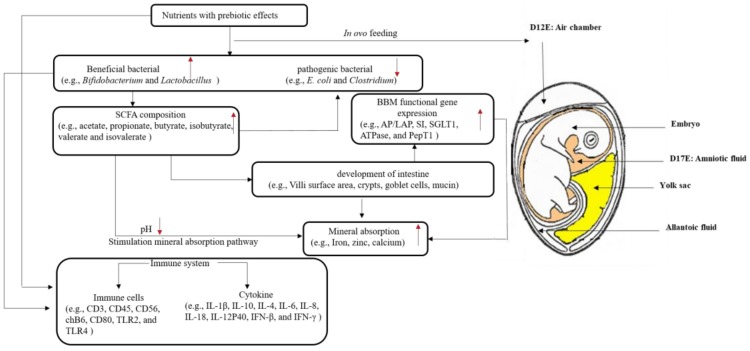Figure 1.
Schematic diagram depicting proposed mechanisms by which the in ovo feeding approach of nutrients with prebiotic properties may affect the Gallus gallus developing embryo. Processes described as follows: post in ovo administration, the gut bacterial populations are affected, mostly as the beneficial bacterial population’s increase (1). The increase of beneficial bacterial (such as Bifidobacterium and Lactobacillus) promote the production of short-chain fatty acids (SCFA) (2). The increased production of SCFA due to bacterial activity leads to a luminal pH reduction (3); moreover, intestinal morphology (such as villi height, crypts, goblet cells, and mucin) is affected (4), and the mineral absorption (iron, zinc, and calcium) is increased due to their pH reduction and their increased solubility (5). The morphological affects (increased villi surface area and goblet cell numbers) can potentially stimulate the intestinal functional genes expressions, primarily proteins that are required for intestinal mineral absorption. In addition, the in ovo prebiotic administration seemed to affect the immune system (6). Black arrow: the relationship between two factors; red arrow: increased or decreased levels. Injection target: the injection site is air chamber at Day 12 (D12;) the injection target is amniotic fluid at D17. BBM: Brush Border Membrane; AP: Aminopeptidase; LAP: leucine aminopeptidase; SI: Sucrase-isomaltase; SGLT1: Sodium glucose transporter 1; PepT1 peptide transporter 1; TLR: toll-like receptor; IL: interleukin; IFN: interferon; ATP: adenosine triphosphate.

